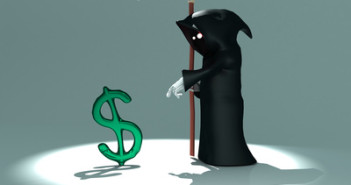Some may blame the effect of Obamanomics for the current stall in any long term financial recovery for the U.S, but whether or not the path that he has chosen to tread is helping or hindering the process, the evidence is clear for all to see, that many Americans are currently struggling with their money.
Retail Sales in the U.S fell in May by 0.2 Percent, the second month running to record a drop and on that evidence it would seem clear that consumers are cutting back on their expenditure. The cut in spending should not be a surprise as small wage increases and unemployment exceeding 8% are taking their toll on households and confidence.
Guest post by Elizabeth Goldman, a financial writer and part time forex trader on behalf of Earn Forex
The problem with a fall in Retail Sales is that consumer spending accounts for about 70% of the economy so it is a vital cog in the wheel of any long term recovery. The figures have prompted Federal Reserve policy makers, who meet next week, to consider their options and decide whether further stimulus is needed to fuel their expansion plans.
The global economy continues to trouble markets as higher borrowing costs in Italy and Germany led to a general fall in stock prices and Standard & Poor’s 500 index fell by 0.7% in response to the latest data.
The significance of a back-to-back monthly decline in Retail Sales in the U.S is a worrying trend as this is the first time that has happened for over two years and mirrored what has been happening in Europe as output in the 17 nation euro also declined 0.8 percent from the previous month, giving a clear sign of a deepening economic slump.
The question for traders and investors is whether any edge in prices can be found on stocks or markets where the economic gloom may have been over-cooked. With regard to retail categories, eight of the thirteen major retail categories showed sales declines in May, with building materials, service stations and general merchandise stores leading the way but an unexpected gain in sales at automobile dealers is a little hard to explain when you consider the overall state of the economy.
The underlying problem facing the U.S economy and the prospects of a sustained recovery is the fact that higher than normal unemployment is a major hindrance to growth and confidence, with consumers therefore seeking out retailers who are perceived to offer value to their customers.
Although seemingly trivial in relation to the overall financial picture, the fact that consumers are now on average waiting six weeks rather than four between visits to their local hairdresser or spa treatment shop, is evidence of the general cautious mood of shoppers and their concerns about the economy.
Unless the government can find a sufficient way to stimulate growth so that it has an effect on the jobless rate and subsequently consumer confidence, there is little sign of a sustained recovery any time soon. The possible impending fallout from a possible “Grexit” scenario in Europe is hardly going to help matters in the short term and it may therefore be wise to enjoy your summer holiday, an economy somewhere will be grateful, and take a fresh look at the retail sector in the fall.
